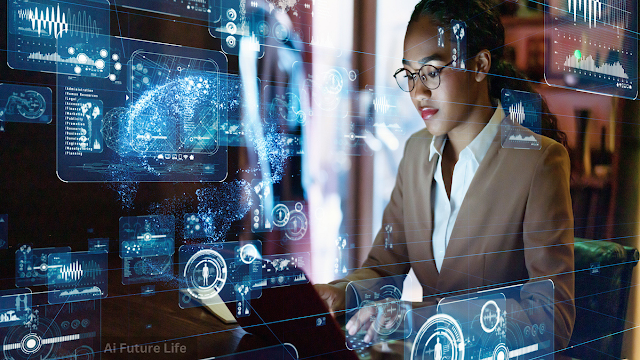.png) Artificial intelligence (AI) has the potential to revolutionize education by enabling personalized learning, automating administrative tasks, and providing new insights into student performance. In recent years, there has been a growing interest in using AI in education, with schools and universities exploring ways to integrate this technology into their teaching and learning strategies. In this essay, we will explore some of the ways in which AI is being used in education and the potential benefits and challenges associated with this technology.
Artificial intelligence (AI) has the potential to revolutionize education by enabling personalized learning, automating administrative tasks, and providing new insights into student performance. In recent years, there has been a growing interest in using AI in education, with schools and universities exploring ways to integrate this technology into their teaching and learning strategies. In this essay, we will explore some of the ways in which AI is being used in education and the potential benefits and challenges associated with this technology.One of the most promising applications of AI in education is personalized learning. By using machine learning algorithms, educational software can analyze data on students' performance and create tailored learning experiences that cater to each student's individual needs. For example, a student struggling with a particular concept may be provided with additional resources or exercises to help them better understand the material, while a student who excels in a particular area may be given more challenging tasks to work on. This personalized approach can help students learn at their own pace, increasing engagement and motivation while also improving learning outcomes.
Another way in which AI can benefit education is by automating administrative tasks. Educational institutions have a lot of administrative work to do, such as grading, scheduling, and managing student records. By automating these tasks, teachers and administrators can free up more time to focus on teaching and supporting students. For example, machine learning algorithms can be used to grade multiple-choice tests or to automatically generate schedules for classes, freeing up teachers and administrators to focus on more complex tasks that require human judgement.
AI can also help teachers and administrators gain new insights into student performance. By analyzing large amounts of data on student behavior and performance, machine learning algorithms can identify patterns and trends that may not be apparent to humans. This can help educators identify areas where students are struggling and develop targeted interventions to address these issues. For example, if a large number of students are struggling with a particular concept, teachers can use this information to develop new instructional materials or provide additional support to help students overcome these challenges.
Despite the potential benefits of AI in education, there are also some significant challenges that must be addressed. One of the main concerns is the potential for bias in AI algorithms. Machine learning algorithms are only as good as the data they are trained on, and if this data is biased, the algorithm may produce biased results. This could lead to unfair or discriminatory outcomes for certain groups of students. To address this concern, it is important to ensure that AI algorithms are trained on diverse and representative datasets and that they are regularly audited to ensure that they are producing fair and accurate results.
Another challenge is the potential for AI to replace human teachers. While AI can be a valuable tool to support teaching and learning, it is important to recognize that it cannot replace the human touch. Students benefit from the emotional support and guidance provided by human teachers, and it is important to ensure that AI is used to enhance, rather than replace, this important aspect of education.
Finally, there are concerns around the ethical implications of using AI in education. For example, there may be concerns around data privacy and security, as well as the potential for AI to be used for surveillance purposes. It is important for educational institutions to develop clear policies around the use of AI and to ensure that they are transparent about how student data is being used and protected..png)
5: With the help of AI, teachers can reduce their workload by automating routine tasks, such as grading assignments and tracking attendance.

.png)
.png)
